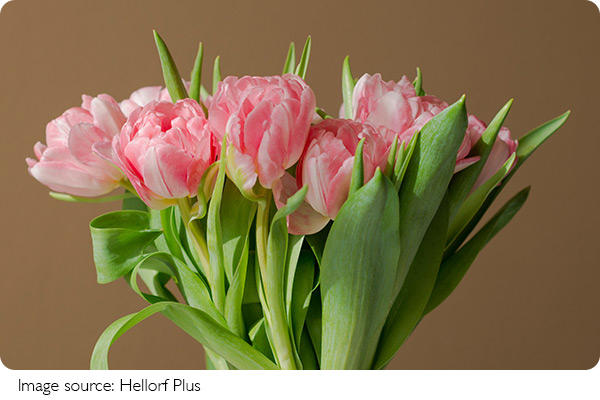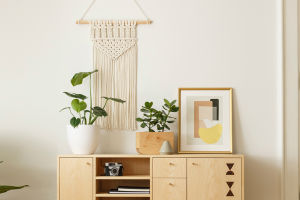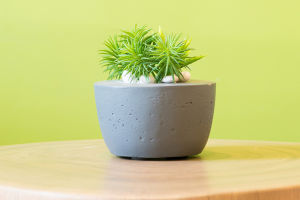
How to Care for Tulips?

Hey there, Lykkers! Spring is here, and it's the perfect time to enjoy the vibrant colors of tulips. Whether you've just picked up a beautiful bouquet or you're getting ready to plant them in your garden, caring for tulips requires some attention to detail.
Let's dive into all the tips and tricks to help you keep your tulips fresh and blooming beautifully!

Choosing the Right Tulips for Your Vase
If you're bringing tulips indoors, picking the right flowers is key to making them last longer. Closed tulips are the best option when buying them for vases. Tulips that are still in their tight, closed bud stage will last much longer than those that are already open. This gives them time to bloom and stretch, which adds to their charm. Make sure to choose a bouquet where the stems are healthy and the buds are firm.
Related
 7 Secrets to Achieving a Sleek Modern Home with Minimalist Design—Your Perfect Space Awaits!
7 Secrets to Achieving a Sleek Modern Home with Minimalist Design—Your Perfect Space Awaits!
 8 Easy Ways to Update Old Wooden Furniture for a Modern Look—No More Outdated Vibes!
8 Easy Ways to Update Old Wooden Furniture for a Modern Look—No More Outdated Vibes!
 Why Are Cacti So Good at Surviving Drought? Discover Their Amazing Survival Secrets!
Why Are Cacti So Good at Surviving Drought? Discover Their Amazing Survival Secrets!
 7 Easy Ways to Keep Your Home Dust-Free and Fresh Every Day!
7 Easy Ways to Keep Your Home Dust-Free and Fresh Every Day!
 Want a Flexible Living Room? Check Out These Sofa Layout Tips to Make Your Space More Spacious!
Want a Flexible Living Room? Check Out These Sofa Layout Tips to Make Your Space More Spacious!
 Want to Make Your Home Look Stunning? Try These Simple Plant Placement Hacks!
Want to Make Your Home Look Stunning? Try These Simple Plant Placement Hacks!
Picking the Right Vase for Your Tulips
The right vase can make all the difference in your tulip arrangement. Choose one that covers about half the height of your tulip stems. This allows the tulips to grow and stretch upward. A tall and narrow vase is great for keeping stems upright and preventing them from drooping. Remember, tulips love to stretch, so give them space to grow!

Cutting Tulip Stems Properly
When it comes to tulips, proper stem care is essential. Always cut the stems at a 45-degree angle to encourage better water absorption. This creates a "straw-like" effect, which helps the flowers soak up fresh water more efficiently. Make sure to trim them right before placing them in the vase for maximum hydration.
Watering and Flower Food Tips
Tulips love water—so make sure to fill your vase with cold, fresh water up to about three-quarters full. They drink a lot! Change the water every couple of days to keep them fresh. You can also add flower food, or even a small amount of lemon juice or sugar, to extend their lifespan.
Sunlight and Placement Considerations
While tulips need sunlight to thrive, they are photosensitive, meaning they react to the sun. Avoid direct sunlight or heat, as it will cause them to wilt faster. A little bending toward the light is normal, but they shouldn't appear floppy. If they are leaning too much to one side, rotate the vase daily to ensure they grow evenly.
Choosing the Right Companions for Tulips
If you plan to mix other flowers in your arrangement, be cautious! Tulips are sensitive to some flowers, especially daffodils. Daffodils release a substance that speeds up tulip wilting, so they shouldn't be mixed in the same vase. However, they pair wonderfully with roses, kale, or hydrangeas. If you want to keep your tulips company, choose these friendly blooms instead!

Planting Tulips in Your Garden
For those of you looking to plant tulips in your garden, timing is everything! Plant your tulip bulbs in the fall or early winter. If you're up north, you can start as early as late September, but for warmer areas, wait until December. This timing ensures they have enough time to establish roots before the ground freezes.
Perfect Planting for Healthy Blooms
When planting, dig a hole three times the size of the bulb. Place the bulbs with the pointed end up, 6 to 8 inches deep and 4 to 6 inches apart. Sandy, well-drained soil is ideal. Tulips prefer areas with morning sun and afternoon shade. If you're using a drill, a bulb auger drill bit makes the process quick and easy.
Mulching and Fertilizing for Tulips
Mulching your tulips during the off-season helps them stay healthy and protected. Cover the bulbs with 1-2 inches of mulch. Also, you can fertilize your bulbs in the fall with slow-release bulb fertilizer to give them an extra boost. If you're feeling extra generous, liquid fertilizer in early spring can also work wonders.
Watering and Cleaning After Blooming
Once your tulips bloom, water them only when needed. They don't require much water once they start sprouting. After blooming, carefully cut the stems and place them in water immediately to rehydrate. If your tulips are annuals, discard the bulbs after they die. For perennial tulips, let the foliage yellow before cutting it back, and leave the bulbs in the ground for the next year.

Growing Tulips in Pots
For potted tulips, make sure your container has adequate drainage to prevent rot. Plant the bulbs about an inch apart, and don't overwater them. Tulips in pots still require sunlight, so make sure they're placed in a bright spot near a window. Just like outdoor tulips, care is similar—avoid overwatering and maintain proper drainage.